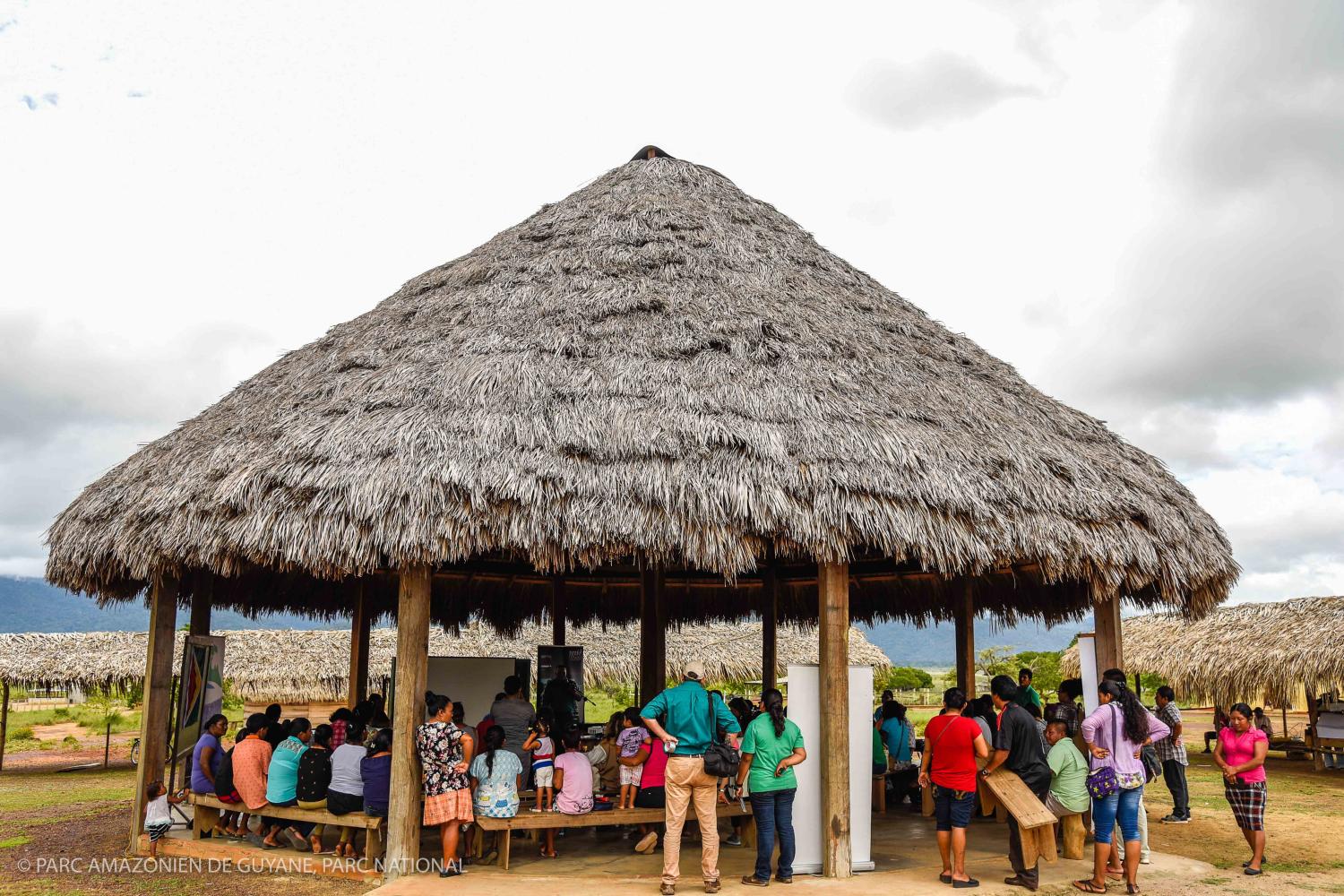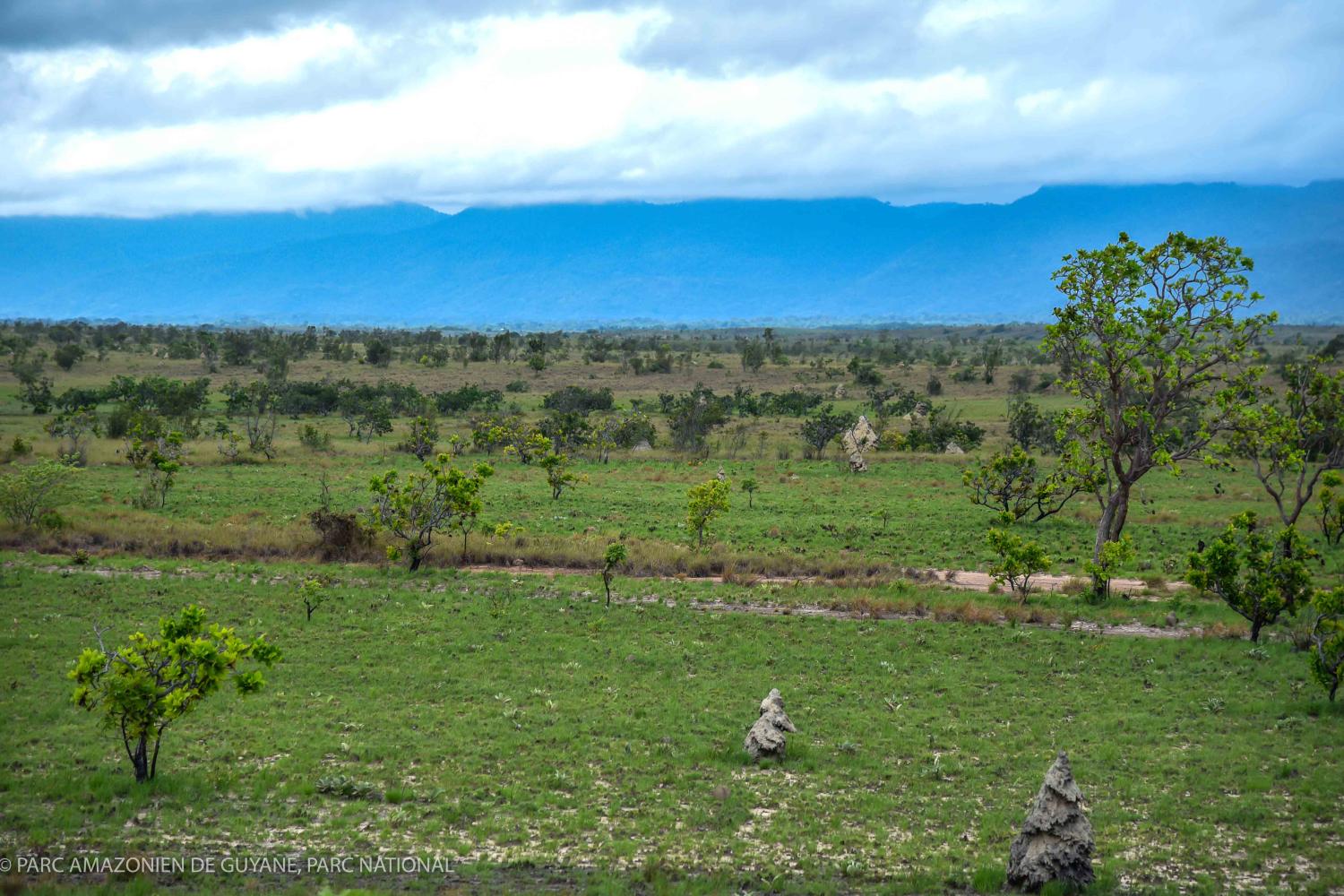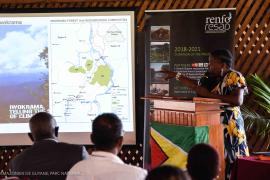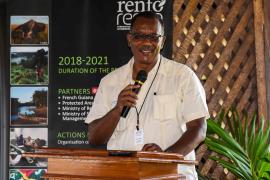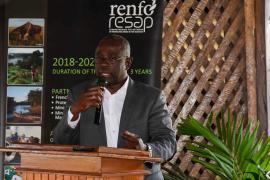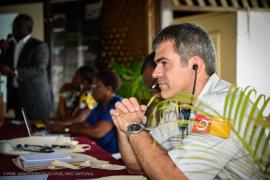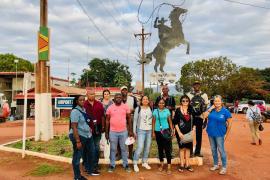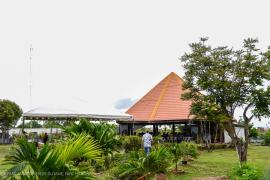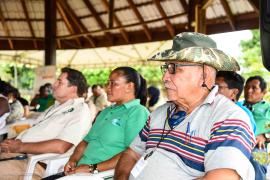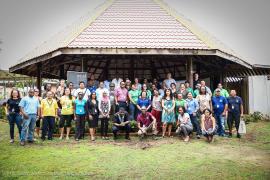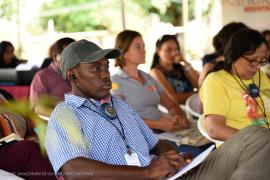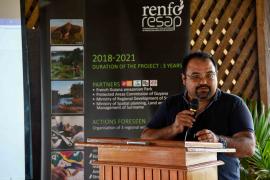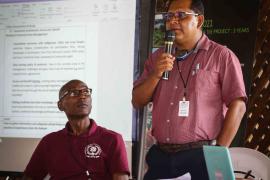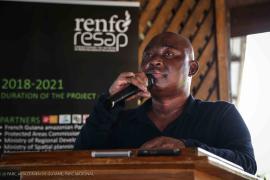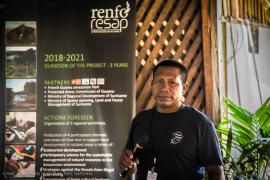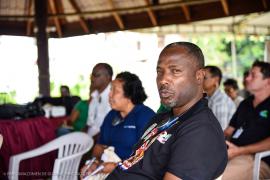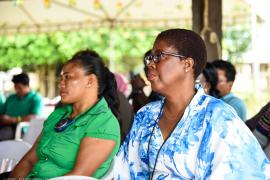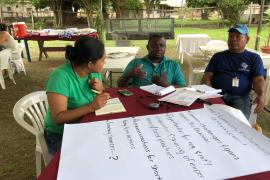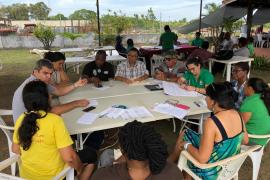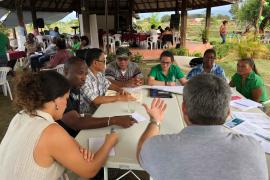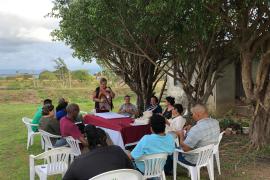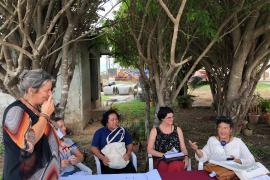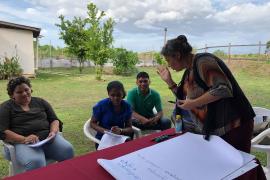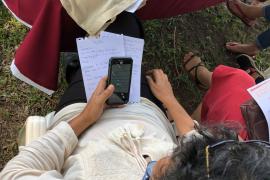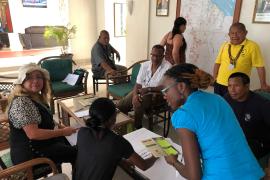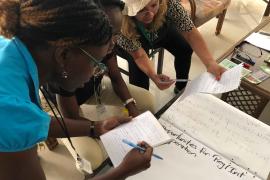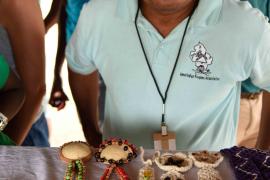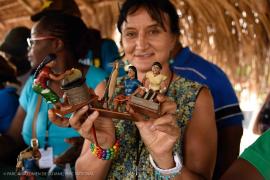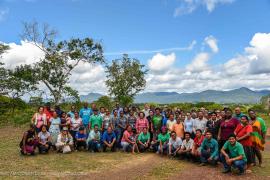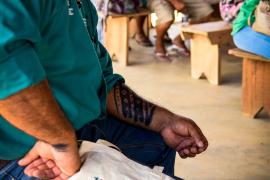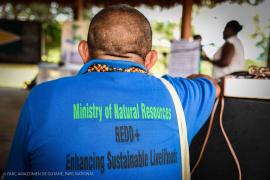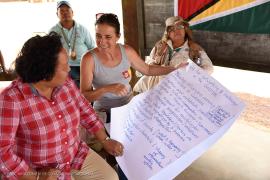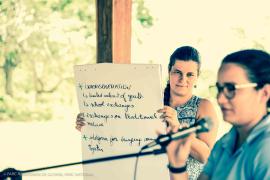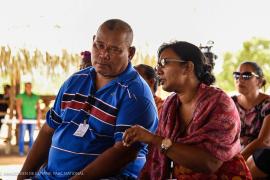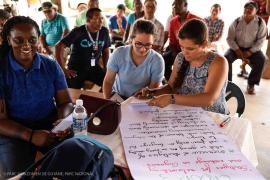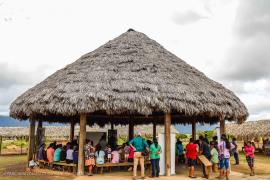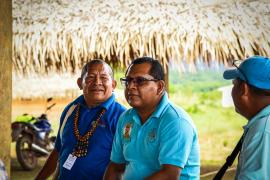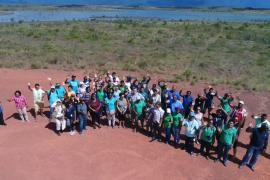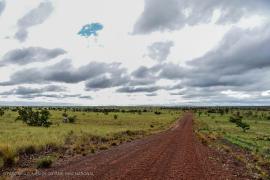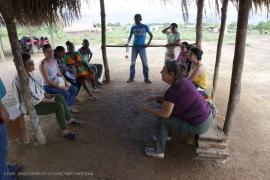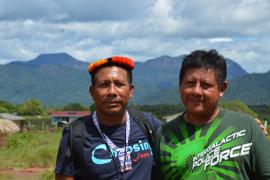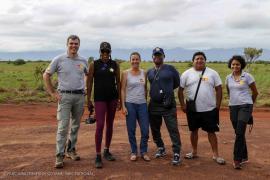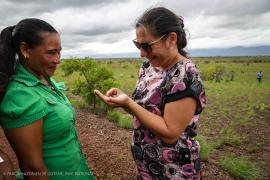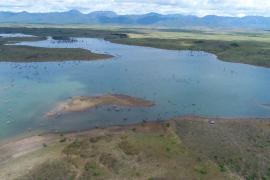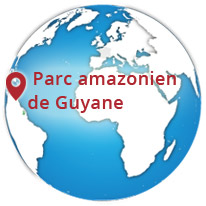Living cultural heritage, as defined by UNESCO1, "includes traditions or living expressions inherited from our ancestors and passed on to our descendants, such as oral traditions, performing arts, social practices, rituals, festive events, knowledge and practices concerning nature and the universe or the knowledge and skills to produce traditional crafts". While living cultural heritage covers a wide range of traditions, the main areas of focus for RENFORESAP are song, dance, language and art.
Objective
The purpose of the workshop was to identify ways of improving the management of protected areas through the sharing of best practices and experiences between stakeholders and communities on how best to encourage and facilitate the transmission of this rich heritage between generations. Over fifty representatives/managers of protected areas and experts in the thematic area from Guyana, Suriname and French Guiana participated in discussions highlighting the efforts, successes and challenges in their individual countries and how these can be integrated into the management of protected areas. Subjects given importance were the preservation of native languages, the strategy for conserving rituals, teaching and play methods that encourage children to take an interest in their own culture, some work on toponymy and collecting oral history from elders, conservation of the built heritage… Over and above shared experiences, the discussions have allowed the participants to get to know each other better and to envisage solid pathways for cooperation in the future.
Outcomes
Key discussions were held on the integration of traditional knowledge into policy, practice and decision-making; community involvement; access and benefit sharing; information gathering and safeguarding living cultural heritage; and the preservation and promotion of language. Participants stressed the importance of the need for legislation, having communities at the centre of all actions and decision-making processes and the need to act now.
Through a series of presentations, panel discussions and working sessions, the participants identified opportunities for cooperation among the three countries and provided short term and long term recommendations towards the development of an action plan for the transmission and use of living cultural heritage in the management of protected areas across the Guianas.


